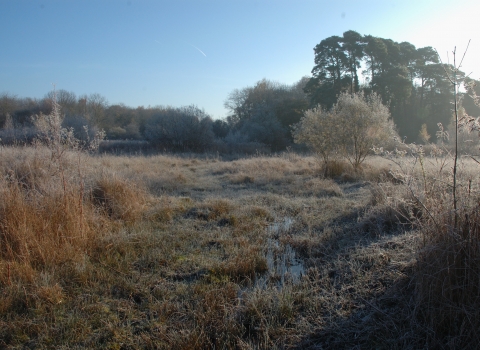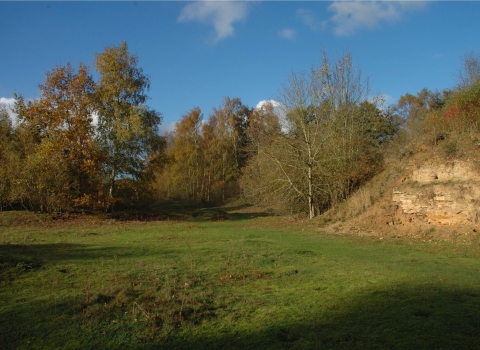Please note: the circular route through the fen and woodland has been closed due to damaged infrastructure and ash dieback. Please keep safe by following waymarked paths and abiding by path closure signs.

Jim Asher
Lashford Lane Fen
Location
Know before you go
Dogs
When to visit
Opening times
Open at all timesBest time to visit
All year roundAbout the reserve
A tropical past
This small, but amazing diverse, wet, shallow valley is a great place to explore all year round. Its wide range of habitats includes reedbeds, limestone grassland, scrub, woodland and fen - a habitat seriously under threat in the UK. Through it all runs Sandford Brook, cutting through the limestone which was formed by layers of marine creatures living in the tropical sea that covered this land 160 million years ago.
Wildlife highlights
In early spring, as you enter the reserve, look out for cowslips flourishing in the grassland. In late summer, these are replaced by pale blue harebells that quiver in the lightest breeze. Stepping through the hawthorn scrub, a whole different world of the rich valley fen shows itself. Meadowsweet with its lovely fragrance and willowherb growing lushly among the tall reeds set a stunning scene, where a host of smaller flowers, such as water mint and water forget-me-not, flourish.
Bird life
In summer, listen out for reed warblers with their distinctive scratching and churring call and the eerie squeals of water rail. Lashford Lane Fen is particularly good for over-wintering reed bunting. Recent felling is allowing the Trust to restore areas of fen and specialist plants are returning. On winter evenings a spooky mist rises, shrouding the fen.
A disappearing mammal
Look out for the endangered water vole in the brook and pond, though you are more likely to hear the 'plop' of them as they slip back into the water. Find out more about our water vole project.
Things to do
- Explore Cothill Fen, one of the most diverse wildlife areas in Oxfordshire, by downloading our circular walk leaflet.
- Try our circular Wildlife Walk (1/3 mile) - just follow the badger waymarkers.



